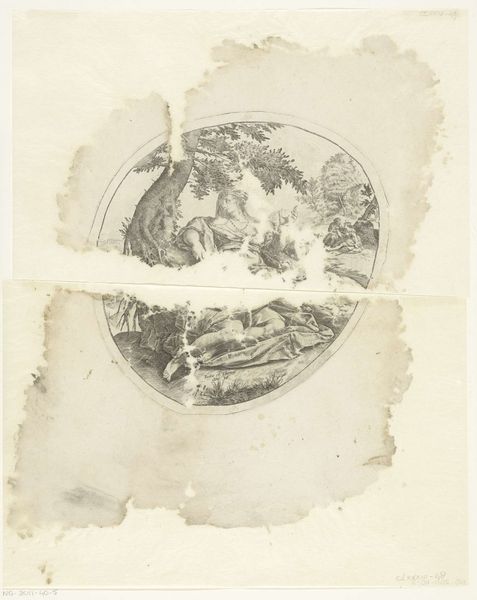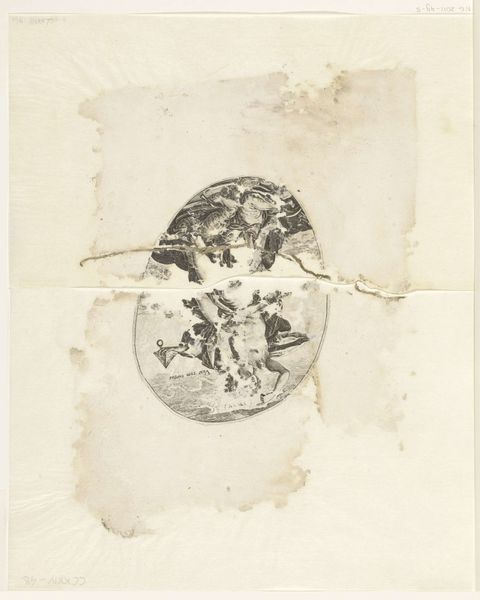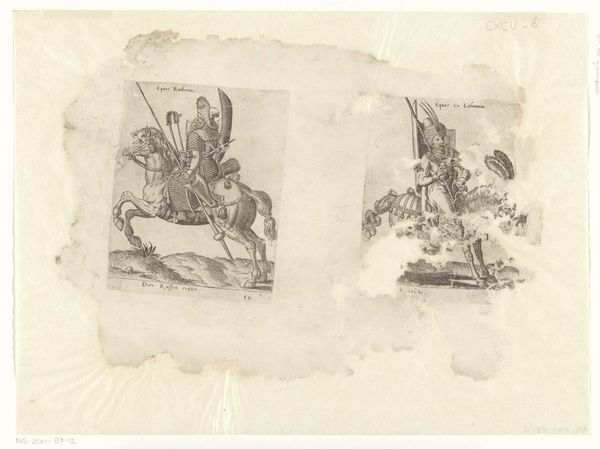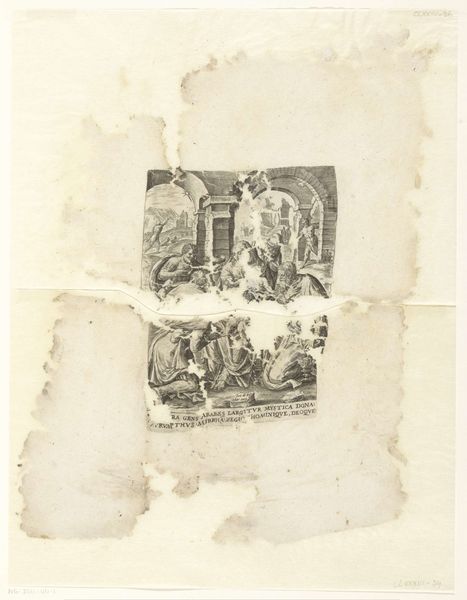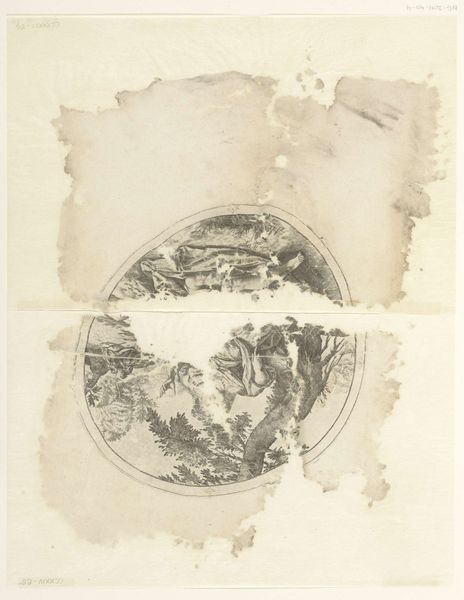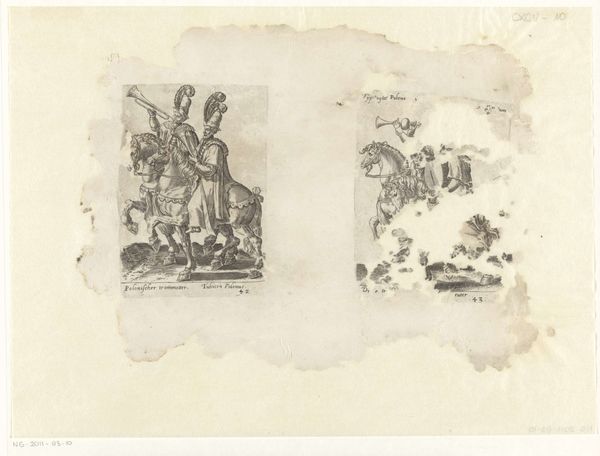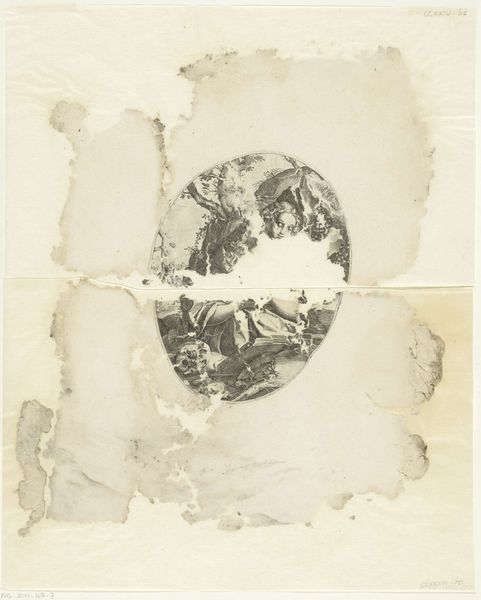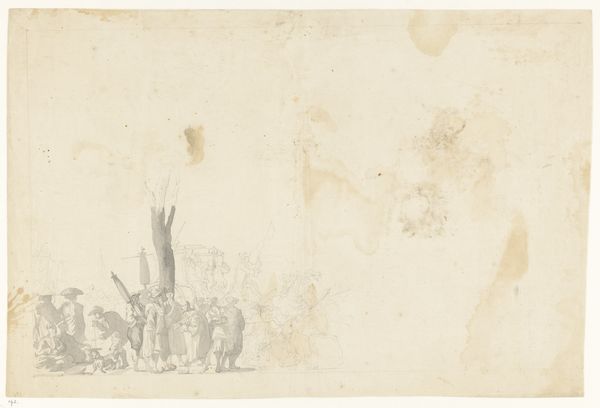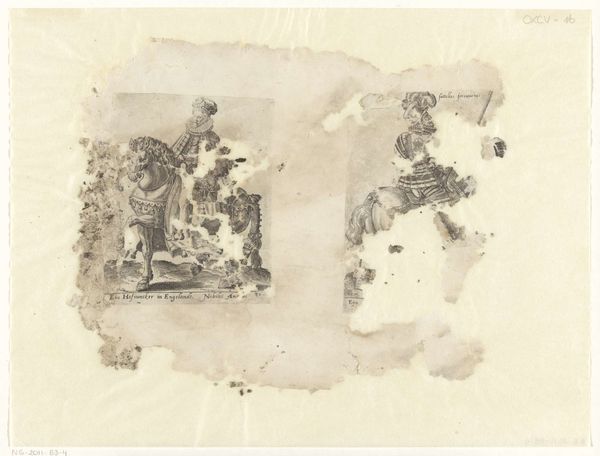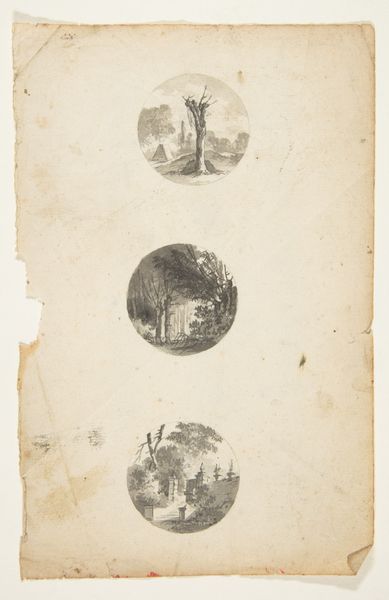
Dimensions: height 373 mm, width 282 mm
Copyright: Rijks Museum: Open Domain
Curator: Standing before us is an engraving titled "Virtue Overcomes War" created between 1580 and 1596 by Hendrick Goltzius. This print, residing here at the Rijksmuseum, exemplifies the dynamism of Baroque artistry. Editor: Wow, talk about contrasting energies. It’s divided pretty starkly, like two separate little worlds crashing into each other, isn’t it? One buoyant, and one... decidedly not. Curator: Indeed. Goltzius uses two distinct roundels. The upper scene depicts Virtue, a triumphant figure, standing on a globe with Latin inscribed nearby, and brandishing a hammer as it vanquishes implements of war which is mirrored, below, in a scene chaotic with fighting and suffering. Editor: The symbolism’s fairly blunt, even for the period, I think. But look at the level of detail he manages! All those tiny bodies in the lower panel, so realistically contorted in their death throes – it's almost gruesome. He seems to relish rendering all the textures; metal, flesh... even Virtue's slightly windswept curls. Curator: His line work is indeed exceptional. Consider the enduring appeal of figuration as a mode of conveying a moral or historical theme, offering, as it does, the ability to convey multifaceted truths. He communicates a direct political sentiment, linking it to universal struggle and morality. It really is something! Editor: So it's a piece made right after a war. But does anyone, any time, ever look at something like this and not see some kind of parallel? This push and pull; between aspirations toward goodness, progress... and the messiness of existence. How often are we at war with ourselves or one another, right? The engraving’s about victory but the drama’s in the grit of it. Curator: A valuable observation! Perhaps what "Virtue Overcomes War" achieves most effectively is to show those states in conflict and symbiosis. Goltzius encapsulates our humanity with the artwork. Editor: In a sense, the chaos is also about the triumph, even if imperfectly. Otherwise, the symbol of triumph is pretty bland! Good ultimately springs from destruction and the work captures a fleeting transition from suffering into some form of victory or grace, however we interpret it. It's like a glimpse into our divided selves that the artwork uncovers!
Comments
No comments
Be the first to comment and join the conversation on the ultimate creative platform.
